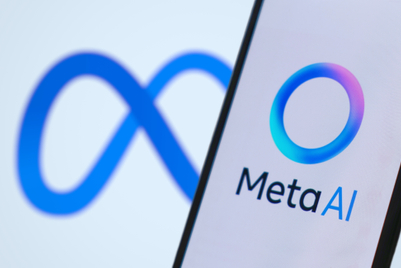.jpg&h=570&w=855&q=100&v=20250320&c=1)
As the era of sports marketing heats up, IMG has launched its Digital Trends Report 2025, an analysis of the technologies, platforms, and innovations poised to shape the global sports media landscape over the next 12 months.
Featuring insights from IMG’s global network of digital experts, the report identifies major shifts in direct-to-consumer (D2C) strategies, the growing influence of wearables, and the importance of personalised AI-driven experiences. In addition, the 2025 edition ranks the 12 most critical third-party media platforms for the sports industry, offering a granular view of audience behaviours, commercial potential, and platform functionality.
Major trends shaping 2025

1. The death of the ‘first’ and ‘second’ screen paradigm
Sports is no longer confined to one dominant viewing experience. While major events like England’s Euro 2024 final capture record-breaking audiences on traditional TV, the competition for attention has shifted. Fans simultaneously engage with their phones, creating a dual-screen environment. The report anticipates that 2025 will see sports properties focus on winning both screens at once, crafting content and campaigns tailored to engage fans seamlessly across devices.
2. The age of wearables arrives
Although wearable technology has been in the market for years, it has yet to rival smartphones in terms of consumer reliance. This is expected to change in 2025, with wearables such as smart glasses and fitness trackers gaining traction. These devices promise to reshape sports engagement, offering fans real-time access to statistics, fitness integration, and interactive experiences, all while generating rich datasets for rights holders and brands.
3. AI moves toward personalisation, not personalities
After a flurry of generative AI experiments, including AI celebrity chatbots and fan-facing tools, the report suggests fans prefer meaningful personalisation over artificial interactions. The next phase of AI innovation will prioritise delivering tailored content and experiences to individual users, shifting away from gimmicky experiments that fail to resonate.

4. Fans want answers, not results
With the rise of AI tools that provide instant, summarised answers, traditional search behaviours are changing. Sports fans now expect fast, direct insights rather than having to sift through editorial content. This trend compels publishers and rights holders to establish their platforms as trusted, authoritative sources in an AI-driven world.
5. Rethinking metrics in an era of abundance
The internet has normalised abundance, enabling sports organisations to achieve scale at a low marginal cost. While impressive numbers like views and impressions abound, the real focus is shifting toward metrics that reflect genuine community engagement and meaningful audience connections, rather than superficial figures.
6. Redefining the D2C value proposition
The direct-to-consumer (D2C) model is evolving. Traditionally built on non-premium content, D2C strategies are now pivoting toward gamification and interactive participation. Sports organisations are creating value propositions centred on utility, rewards, and immersive fan engagement, ensuring a more compelling experience.
7. Monetising short-form and non-live content
Platforms such as TikTok, YouTube Shorts, and Instagram Reels have driven incredible engagement with short-form and non-live content. However, monetisation has lagged behind. In 2025, sports organisations are expected to bridge this gap, unlocking meaningful revenue streams from these highly consumed formats.
Platform Power Rankings: YouTube takes the crown
This year’s report also unveils IMG’s updated Platform Power Rankings, which evaluate platforms based on audience profile, commercial potential, and their value to rights holders. YouTube emerges as the clear leader, supplanting TikTok and Instagram to become the industry’s most important digital partner.
1. YouTube
With more than 2.7 billion active users, YouTube’s versatility makes it indispensable for the sports industry. From live-streamed matches to short-form highlights, it serves as a hub for both consumption and monetisation, offering unparalleled reach across demographics.
2. Instagram
Instagram holds steady as a key platform, particularly for visually driven sports content. Its integration with Meta’s ad ecosystem makes it a go-to for campaigns targeting younger, image-focused audiences.
3. TikTok
Despite its decline in rankings, TikTok remains a cultural powerhouse for short-form video. However, ongoing legal challenges and monetisation struggles have dampened its appeal for rights holders seeking reliable revenue streams.
4. Facebook
Once a dominant force, Facebook continues to lose ground but retains value for older demographics. Its ad targeting capabilities and integration with Instagram help it maintain relevance.
5. WhatsApp
WhatsApp’s potential remains largely untapped, with slow progress on features like Channels limiting its commercial viability. Nonetheless, its reach makes it a platform to watch for community engagement.
6. Reddit
The biggest riser in this year’s rankings, Reddit’s focus on community engagement and new partnerships with sports leagues have made it an increasingly attractive option for rights holders.
7. X (formerly Twitter)
While X remains vital for live updates and news, its declining influence reflects a broader shift away from text-heavy platforms. Sports organisations are reducing their reliance on X as they explore other avenues for engagement.
8. Discord
Discord’s focus on niche communities and real-time interaction makes it an underdog with significant potential for fan engagement, particularly in esports and gaming-driven sports.
9. Snap
Snapchat continues to appeal to Gen Z audiences but struggles to expand its value proposition for rights holders. Its augmented reality capabilities, however, remain a unique selling point.
10. Threads
After a year of strategic updates, Threads makes its debut in the top 10. While it has yet to establish itself as a major influencer in the sports world, its growing user base hints at future opportunities.
11. LinkedIn
A valuable platform for B2B engagement, LinkedIn remains outside the top 10 due to its limited fan-facing capabilities.
12. Twitch
While Twitch continues to dominate in esports, its application for traditional sports remains niche. Rights holders are yet to unlock its full potential.


.jpg&h=334&w=500&q=100&v=20250320&c=1)


.png&h=334&w=500&q=100&v=20250320&c=1)





.png&h=334&w=500&q=100&v=20250320&c=1)

.jpg&h=268&w=401&q=100&v=20250320&c=1)
.jpg&h=268&w=401&q=100&v=20250320&c=1)
.jpg&h=268&w=401&q=100&v=20250320&c=1)
.png&h=268&w=401&q=100&v=20250320&c=1)


